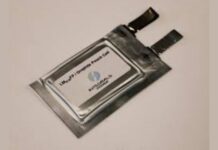Indian wearable technology market has grown substantially over the past decade. Against 1 million units of smart wearable shipments in India in 2015, a whooping 134.2 million units were shipped in 2023, translating to 84% growth YOY from 2015-2023. Although the third largest market after USA and China, Indian market is still in the early growth stage and is expected to grow from a USD 1.3 bn market in 2022 to a USD 5.7 bn market by 2027.
Key growth drivers include young population, rising health consciousness, technological advancements and increase in disposable income
- Young Population: Indian population is significantly young, with youths (aged 15-29 years) comprising ~27% of the population. A young generation of tech-savvy, digitally connected, health conscious and financially independent people will drive the adoption of smart wearables.
- Health and Fitness Awareness: Indian consumers are increasingly health-conscious, driving demand for wearable devices that not only track physiological data but also provide health analysis and assist in detecting medical conditions. This trend is fuelled by the rise in chronic diseases such as diabetes and cardiovascular issues. Additionally, insurance providers are partnering with smart wearable manufacturers to monitor health and reduce claims. Consequently, wearable technology is set to become a vital component of the healthcare ecosystem.
- Technological Innovation: Continuous technical innovations and enhanced functionalities are key growth drivers in the wearable market. Smartwatches now serve as all-in-one solutions for calls, messages, contactless payments, gaming, and health monitoring. Meanwhile, smart rings are emerging as advanced devices that integrate technology with daily use.
- Higher Disposable Income: With average household incomes in urban areas increasing by ~25% over the past three years, discretionary spending on technology has seen a significant uptick. Notably, the premium segment ($100-200) of wearables has grown year-over-year, indicating stronger purchasing power.
However, concerns pertaining to data accuracy, security and market commoditisation remain
- Data Accuracy: Currently, there are concerns pertaining to accuracy of data captured by smart wearables, due to improper placement on the body, faulty sensors or user errors, and thus they have limited clinical validation.
- Data Security: Another major concern is the collection, storage and usage of personal data. These devices collect sensitive information, which is stored in the cloud, and even shared with third parties for a variety of uses. Without proper security and encryption protocols in place, this data is vulnerable to security breaches, unauthorised access and misuse.
- Market Saturation: India’s wearable technology shipments saw consecutive quarterly declines by 10% in Q2CY25 and 20.7% in Q3CY25, indicating market saturation and inventory buildup, particularly in established categories like smartwatches. The influx of low-cost alternatives has intensified competition, leading to higher
inventories and decreased average selling prices.
Major investments in Indian market will propel growth
The semiconductor industry’s increased focus on developing specialized chips for wearables presents significant investment opportunities. Companies like Qualcomm and MediaTek are investing heavily in India, recognizing the market’s potential and the need for energy-efficient, powerful computing solutions, which are also environmentally sustainable.
The future landscape promises seamless integration of wearables into daily life, enhancing personal health and productivity
The future of wearable technology lies in its ability to become truly invisible through seamless integration, like clothing that monitors health, accessories that manage digital interactions, and personal devices that anticipate needs before we articulate them. Such technology has the potential to grow in:
- Personalized Healthcare: Wearable technology enables AI-driven health monitoring and predictive analytics by tracking vital signs and health metrics, enhancing personalized healthcare. Companies can leverage this data to develop tailored health solutions, improving patient outcomes and reducing costs.
- Enterprise Solutions: In the workplace, wearables enhance safety and productivity by allowing organizations to monitor environmental conditions, track movements, and ensure compliance, thus improving operational efficiency and reducing accidents.
- Digital Connectivity: The consumer market is witnessing a surge in smart clothing and accessories embedded with technology which offer fitness tracking, health monitoring, and seamless connectivity to digital platforms. As consumer demand for innovative lifestyle solutions grows, businesses can create unique offerings that blend fashion with technology, catering to the evolving preferences of modern consumers.
The Indian wearable technology market represents a unique confluence of demographic advantage, technological innovation, and market opportunity. As the market continues growing, businesses that can combine innovation with local market understanding and competitive pricing will likely emerge as leaders in this dynamic ecosystem. This market provides an opportunity to participate in a technological revolution that will reshape how millions interact with technology. The invisible revolution is not just wearing our technology; it’s wearing the future of business innovation.
About the authors:
Hammad Murtaza
Consultant, Avalon Consulting
Hammad Murtaza is a management consultant with Avalon Consulting, bringing over 4 years of experience in strategy formulation and business development. Hammad has worked with client across geographies in performance improvement, cost optimisation, market entry strategy projects, growth strategy and commercial due diligence. Hammad holds an MBA in General Management from the Xavier Institute of Management, Bhubaneswar and a bachelor’s degree in mechanical engineering from ZHCET, Aligarh Muslim University, reflecting a strong foundation in both technical and business disciplines.
Arka Ghosh
Consultant, Avalon Consulting
Arka Ghosh is a Strategy Consultant with 1.5+ years of experience in growth strategy, GTM strategy, performance improvement, organisational transformation, change management and customer satisfaction, within steel, chemicals, and automobile industries. His professional experience also includes retail sales with Samsung, and quality assurance with L&T Constructions. A mechanical engineer from NIT Agartala, he completed his MBA in Marketing from SIBM Pune.

















